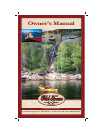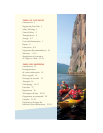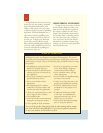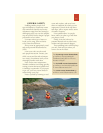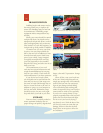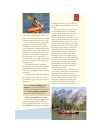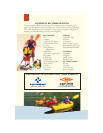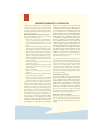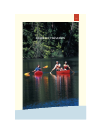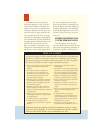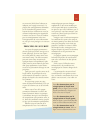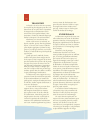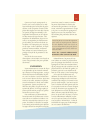
REPAIR
Your canoe or kayak is built to last.
With proper care and maintenance, as
described on the previous pages, your
boat should give you and your family
years of enjoyment.
Though our canoes and kayaks
are built to withstand years of use and
abuse, mishaps can occur and your
boat may at some point become dam-
aged and need repair. In the event of a
problem, we recommend you contact
your local dealer for the appropriate
repair kit or parts. These same dealers
can repair the boat for you or give you
assistance in getting started in the right
direction.
Remember that no kayak is com-
pletely watertight. It is normal to take
on a cup or two of water through rivets
or hatches. However, if your kayak is
taking on signifi cant amounts of water,
you may have a pin hole leak. Either
locate the leak yourself (by fi lling the
boat with water and observing leaks),
or take it to your dealer for servicing.
Contact us any time for assistance, and
we’ll see to it you’re back on the water
in no time!
INSTRUCTION
Before you set out, it is important to
get good instruction. Check with your
dealer or local club to fi nd out about
classes offered locally. You should look
for a course that covers basic strokes,
braces and rescue techniques. With any
outdoor activity, it is also good to be
familiar with fi rst aid, especially CPR
and treatment of hypothermia.
HOW TO PADDLE A KAYAK
The Paddle: Place your hands on the
paddle shaft a little further apart than
shoulder width. As a guide, hold your
arms out to the sides then bend them to
90 degrees at the elbow. This is about
how far your hands should be from
each other as you grasp the paddle.
Remember you only want to hold the
paddle, not choke it. Over grip can tire
your arms.
You may notice some paddlers us-
ing off-set or feathered blades rather
than blades that are on the same plane.
Feathered blades are sometimes used to
lessen wind resistance, but are largely
a matter of personal preference. For
beginners a straight blade arrangement
is easiest.
The Paddler: Sit all the way back
in the cockpit of your kayak. Careful
adjustment will make your backrest a
comfortable aid in maintaining proper
body position.
Also adjust your foot braces before
you leave the shore. To properly adjust
foot braces on a sit-on-top kayak,
straighten your legs all the way then
bring them in one foot well. On a sit-
inside kayak, foot brace adjustment
should provide a snug fi t for your knees
and thighs. The fi t will depend on the
paddler and the kayak bracing system.
Remember if your legs are too straight,
you may strain your lower back.
Some boats are equipped with thigh
braces. For boats with easily adjusted
| 08
Place the blade in the water near your toes



